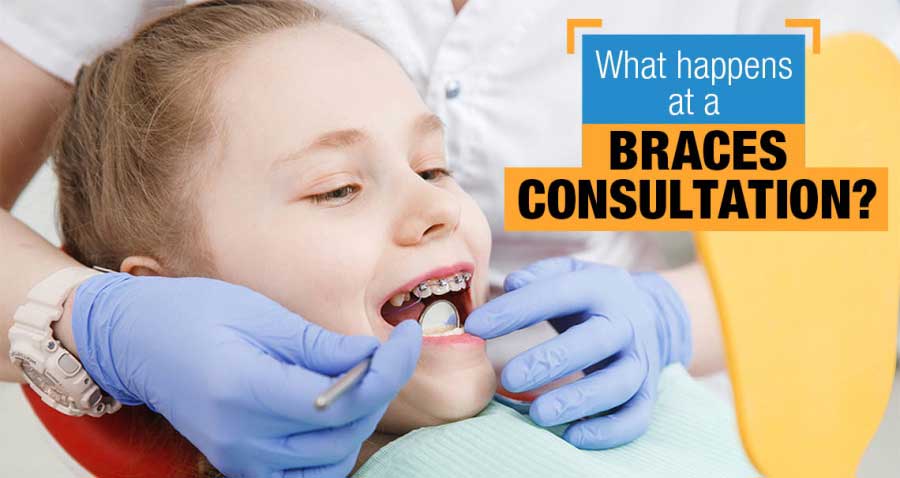Your Guide to Cumming Invisalign: Straightening Teeth with Style and Convenience
Wiki Article
Comprehensive Overview to Orthodontics Treatments for Dealing With Oral Misalignments
In the world of orthodontics, the journey to accomplishing a flawlessly lined up smile involves a myriad of procedures customized to deal with oral misalignments. From conventional dental braces to unnoticeable aligners and even medical choices, the field of orthodontics provides a range of remedies to attend to varying levels of dental abnormalities. Comprehending the ins and outs of each treatment, including their systems, benefits, and possible downsides, is critical in making informed choices concerning one's orthodontic treatment. As we navigate through the extensive overview to orthodontic procedures for correcting dental misalignments, the intricate details of each technique will certainly unravel, clarifying the path towards a unified and useful oral positioning.Orthodontic Procedures Overview

In addition to clear aligners and conventional braces, orthodontists might also recommend various other interventions like headgear, palatal expanders, or retainers to resolve specific alignment issues (orthodontist). These procedures are customized to every client's unique demands and may involve a mix of therapies to accomplish the wanted results. Normal modifications and tracking are critical parts of orthodontic therapy to guarantee development gets on track and to make any type of essential modifications in the process. By undertaking orthodontic treatments, clients can not just achieve a straighter smile however also boost their total dental health and wellness and function.
Traditional Braces: How They Function
When thinking about orthodontic treatments for oral misalignments, standard braces stand apart as a time-tested technique for dealing with teeth placing. Standard braces contain brackets, cables, and bands that interact to apply continuous pressure on the teeth, slowly relocating them right into the preferred positioning. The brackets are attached to the teeth using a special adhesive, and the cables are threaded with the braces. By changing the tension of the cords, orthodontists can regulate the direction and pressure put on each tooth, leading them right into appropriate alignment in time.
As pressure is applied to the teeth with the braces, the bone surrounding the teeth is reshaped to sustain the new tooth settings. People will certainly require normal adjustments at the orthodontist's office to guarantee the dental braces continue to apply the appropriate stress for efficient teeth activity.
Unseen Aligners: Pros and Cons
These clear, tailor-made trays are basically unseen when put on, making them an attractive option for individuals seeking a more cosmetically pleasing orthodontic treatment. Patients can remove the aligners prior to consuming or brushing their teeth, reducing the danger of food getting stuck in the appliance and streamlining the cleansing procedure.
Surgical Orthodontic Options
Surgical interventions in orthodontics existing viable choices for dealing with intricate dental misalignments that might not be effectively solved through standard orthodontic therapies. While undetectable aligners and typical braces can fix many orthodontic concerns, particular situations need medical treatment to attain optimum results. Surgical orthodontic options are commonly advised for serious malocclusions, considerable jaw inconsistencies, dental implant companies and situations where the underlying bone structure requires modification to attain correct positioning.One common medical orthodontic treatment is orthognathic surgical procedure, which includes repositioning the jaws to deal with useful issues such as trouble talking or chewing. This surgery is frequently executed in collaboration with an orthodontist who assists line up the teeth prior to and after the treatment. Surgical orthodontics may likewise entail procedures to subject impacted teeth, get rid of excess periodontal cells, or improve the jawbone to produce a more harmonious face profile.
Before thinking about medical orthodontic alternatives, patients undertake a detailed assessment to identify the necessity and possible advantages of such interventions. invisalign. While surgical treatment may appear difficult, it can considerably enhance both the function and aesthetics of the smile in cases where conventional orthodontic treatments fail
Retainers and Post-Treatment Care

Post-treatment care entails complying with the orthodontist's guidelines carefully. This might include correct oral hygiene methods, going to follow-up visits, and using the retainers as prescribed. Failure to follow post-treatment care guidelines can lead to regression, where the teeth slowly return towards their initial settings. Regular retainer wear, excellent oral health, and regular oral exams are crucial for preserving the results accomplished via orthodontic surgical procedure and making sure the long-term stability of the fixed dental placement.
Conclusion
In conclusion, orthodontic procedures provide numerous choices for remedying dental imbalances. Surgical orthodontic choices are readily available for much more serious misalignments. Overall, orthodontic procedures can effectively enhance oral health and visual appearance.As we browse via the extensive guide to orthodontic procedures for fixing dental imbalances, the intricate information of each method will certainly unravel, losing light on the path towards a useful and harmonious dental placement. - cumming aligners
One of the most usual orthodontic therapies is the use of dental braces, which consist of steel braces and wires that apply mild pressure to gradually change teeth right into the desired placement.When considering orthodontic click here for more treatments for dental imbalances, conventional dental braces stand out as a tried and true method for fixing teeth positioning. Additionally, undetectable aligners may not be appropriate for complicated orthodontic problems that need even more substantial teeth activity, as what is dencity they are typically advised for light to modest instances. Retainers are tailor-made orthodontic devices created to hold teeth in their corrected placements after the completion of orthodontic therapy.
Report this wiki page